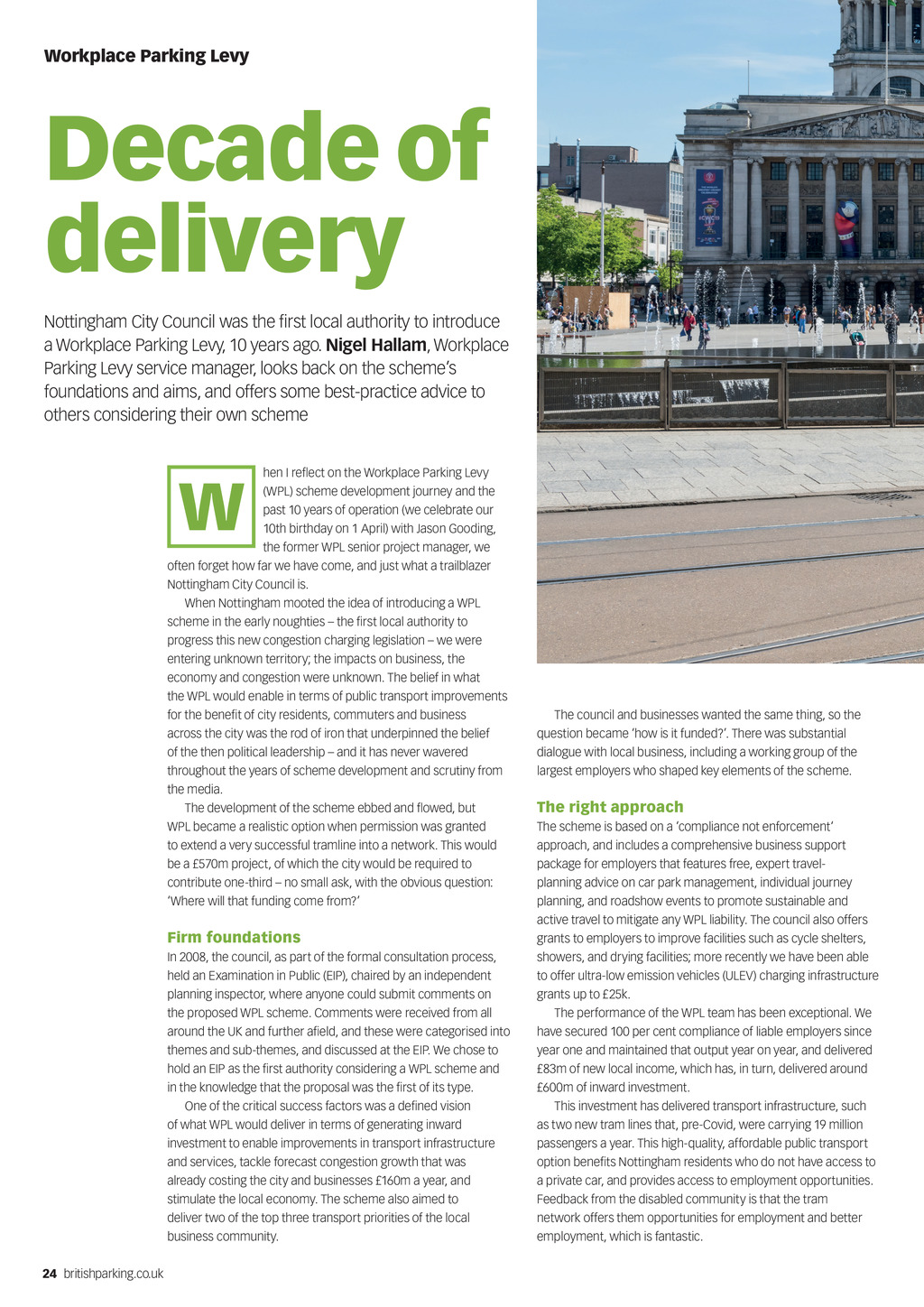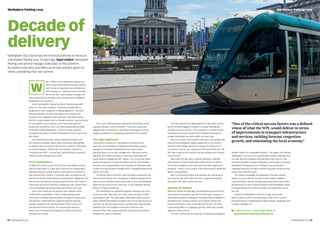


Workplace Parking Levy Decade of delivery Nottingham City Council was the first local authority to introduce a Workplace Parking Levy, 10 years ago. Nigel Hallam, Workplace Parking Levy service manager, looks back on the schemes foundations and aims, and offers some best-practice advice to others considering their own scheme hen I reflect on the Workplace Parking Levy (WPL) scheme development journey and the past 10 years of operation (we celebrate our 10th birthday on 1 April) with Jason Gooding, the former WPL senior project manager, we often forget how far we have come, and just what a trailblazer Nottingham City Council is. When Nottingham mooted the idea of introducing a WPL scheme in the early noughties the first local authority to progress this new congestion charging legislation we were entering unknown territory; the impacts on business, the economy and congestion were unknown. The belief in what the WPL would enable in terms of public transport improvements for the benefit of city residents, commuters and business across the city was the rod of iron that underpinned the belief of the then political leadership and it has never wavered throughout the years of scheme development and scrutiny from the media. The development of the scheme ebbed and flowed, but WPL became a realistic option when permission was granted to extend a very successful tramline into a network. This would be a 570m project, of which the city would be required to contribute one-third no small ask, with the obvious question: Where will that funding come from? W Firm foundations In 2008, the council, as part of the formal consultation process, held an Examination in Public (EIP), chaired by an independent planning inspector, where anyone could submit comments on the proposed WPL scheme. Comments were received from all around the UK and further afield, and these were categorised into themes and sub-themes, and discussed at the EIP. We chose to hold an EIP as the first authority considering a WPL scheme and in the knowledge that the proposal was the first of its type. One of the critical success factors was a defined vision of what WPL would deliver in terms of generating inward investment to enable improvements in transport infrastructure and services, tackle forecast congestion growth that was already costing the city and businesses 160m a year, and stimulate the local economy. The scheme also aimed to deliver two of the top three transport priorities of the local business community. The council and businesses wanted the same thing, so the question became how is it funded?. There was substantial dialogue with local business, including a working group of the largest employers who shaped key elements of the scheme. The right approach The scheme is based on a compliance not enforcement approach, and includes a comprehensive business support package for employers that features free, expert travelplanning advice on car park management, individual journey planning, and roadshow events to promote sustainable and active travel to mitigate any WPL liability. The council also offers grants to employers to improve facilities such as cycle shelters, showers, and drying facilities; more recently we have been able to offer ultra-low emission vehicles (ULEV) charging infrastructure grants up to 25k. The performance of the WPL team has been exceptional. We have secured 100 per cent compliance of liable employers since year one and maintained that output year on year, and delivered 83m of new local income, which has, in turn, delivered around 600m of inward investment. This investment has delivered transport infrastructure, such as two new tram lines that, pre-Covid, were carrying 19 million passengers a year. This high-quality, affordable public transport option benefits Nottingham residents who do not have access to a private car, and provides access to employment opportunities. Feedback from the disabled community is that the tram network offers them opportunities for employment and better employment, which is fantastic. 24 britishparking.co.uk PN March 2022 pp24-25 WPL.indd 24 22/02/2022 14:46